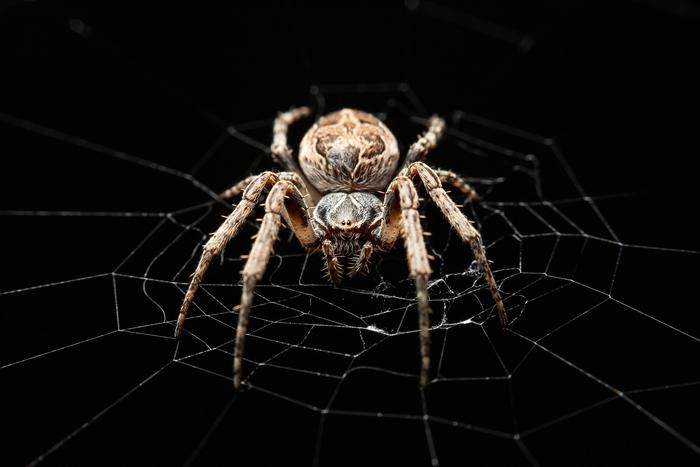Spinning Sound: How Spider Silk Could Revolutionize Microphone Technology
Researchers uncover that spider silk’s unique ability to detect sound velocities could inspire next-generation microphone designs
May 20, 2024
[DALL-E]
Spider silk might be the secret to the best microphone in the world. While spiders spin webs to catch their prey, these sticky strands also aid in their hearing. Unlike human eardrums and conventional microphones that detect sound pressure waves, spider silk reacts to changes in the velocities of air particles propelled by a sound field. This method of sound velocity detection is largely unexplored but holds significant promise for high-sensitivity, long-distance sound detection.

Researchers at Binghamton University studied how spiders listen to their surroundings through their webs. They discovered that spider webs match the acoustic particle velocity across a wide range of sound frequencies. Ronald Miles presented the findings last week during the joint meeting of the Acoustical Society of America and the Canadian Acoustical Association at the Shaw Centre in Ottawa, Ontario, Canada.
“Most insects that can hear sound use fine hairs or their antennae, which don’t respond to sound pressure,” said Miles, a professor of mechanical engineering. “Instead, these thin structures respond to the motion of the air in a sound field. I wondered how to make an engineered device that would also be able to respond to sound-driven airflow. We tried various man-made fibers that were very thin, but they were also very fragile and difficult to work with. Then, Dr. Jian Zhou was walking in our campus nature preserve and saw a spiderweb blowing in the breeze. He thought spider silk might be a great thing to try.”
Before developing such a device, the team needed to prove that spider webs genuinely responded to sound-driven airflow. To test this idea, they simply opened their lab windows and observed the Larinioides sclopetarius, or bridge spiders, residing on the windowsills. They played sounds ranging from 1 Hz to 50 kHz for the spiders and measured the movement of the spider silk with a laser vibrometer. The results showed that the sound-induced velocity of the silk matched the particles in the surrounding air, confirming the mechanism these spiders use to detect their prey.
“Because spider silk is, of course, created by spiders, it isn’t practical to incorporate it into the billions of microphones that are made each year,” said Miles. “It does, however, teach us a lot about what mechanical properties are desirable in a microphone and may inspire entirely new designs.”


















